You probably have word by now: The Irreversible winds of change are on their way regarding Google Analytics. Deadline? July 1st, 2023. On that date, good old Universal Analytics (UA) will be replaced by next-gen Google Analytics 4 (GA4). Beyond cosmetic considerations (as with any major upgrade), we need to understand how this will likely modify the data collection logic. Furthermore, it’s important to grasp the reasons that motivated Google to make such a decision. You may wonder about the differences between Google Analytics 4 vs. Universal Analytics.
So first, we will need a few reminders about Google Analytics and the purpose it is meant to serve. Then we will explore the novelties supposed to be brought by the so-called fourth version, namely GA4. We can only be ready to dive into a Google Analytics 4 vs. Universal Analytics comparative review. Ready? Here we go.
Google Analytics in a Nutshell
At least ‘old timers’ will remember: It all started with the somewhat aquatically baptized Urchin in 2005. It can be considered the first serious step by Google regarding web analytics service. By acquiring that platform, the leading multinational technology company was pursuing both practical and aesthetic goals. Indeed, the older log files available on those days needed a serious relooking to become more easily ‘readable’ for the layman.
Then it escalated quite quickly. The aforementioned Google analysis system was redesigned in 2006 and started going by Google Analytics. Several changes accompany the process over time, such as those related to codes (synchronous/asynchronous, etc.).
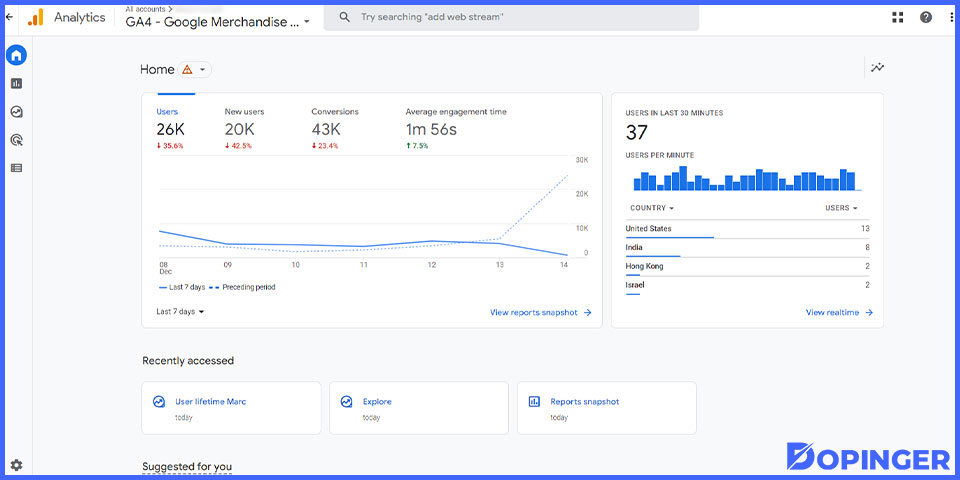
However, the pivotal moment occurred in 2012 when Google Analytics became the well-known Universal Analytics. With the upsurge in the usage of mobile devices and applications, it was about time to offer the public something way more flexible and adaptable. Hence the cross-platform tracking possibilities regardless of the device type used. One of the merits of Google Analytics was (and still is) its customization options.
Then in 2018, a sudden wake-up call disturbed the dolce vita Google and Universal Analytics were carelessly living for a while. GDPR (General Data Protection Regulation), namely Europe’s improved data privacy and security laws, shows how firmly it is determined to protect European citizens against any fraudulent data collection practices. Starting with France (unsurprisingly), many countries, including non-European ones, started approaching UA with extreme caution while reinforcing their privacy measures. So eventually, Google had nothing to do but realize it couldn’t act as loose as before regarding information sharing.
Consequence? In October 2020, the company announced the arrival of a new Google Analytics, GA4. You may need a Google Analytics 4 guide.
What’s New with Google Analytics 4?
As you see, what was at stake for Google was no less than its reliability in the eyes of the public. It was time to reassure the huge community of users worldwide by proposing something better. So what are Google Analytics 4 properties? What should you expect from them? Let’s briefly review some of them. This focus might help you better understand the Google Analytics 4 vs. Universal Analytics dynamics we will discuss later.
Customizations
Google Analytics 4 broadens your user experience by making it much more personalizable. Reports are probably the most striking example in that regard. With GA4, you can now add them directly to your navigation. This means you don’t need to ‘chase’ your reports elsewhere on the platform. Any currently existing or new reports are at your disposal in the Reports navigation.
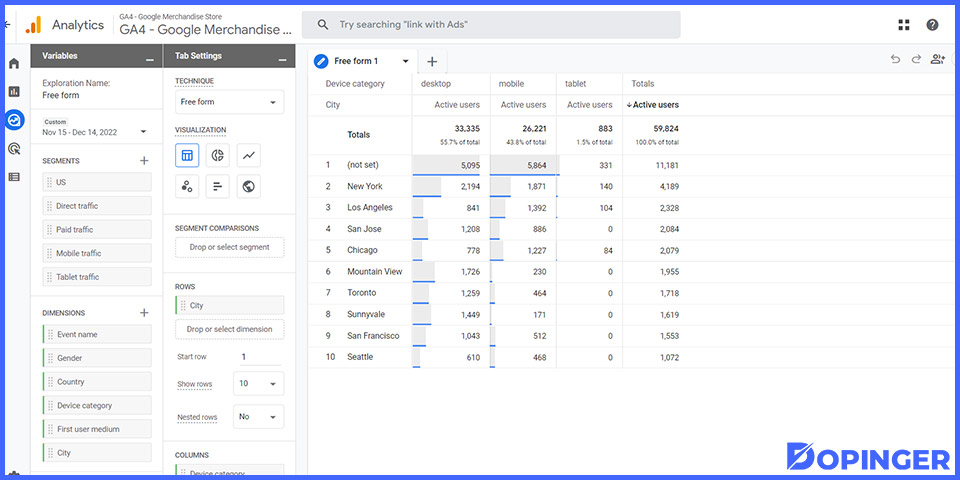
The same practicality applies to the Library features as well. Rename your collections and topics in no time via the secondary navigation.
Predictive Analytics
Thanks to GA4, users get rid of a serious burden they had to deal with until now. No more need for tedious analysis solutions to create on your own or third-party services. You may now use GA4 also as a predictive analytics tool for churn probability, lifetime value, likely purchases, or likely top spenders (among others).
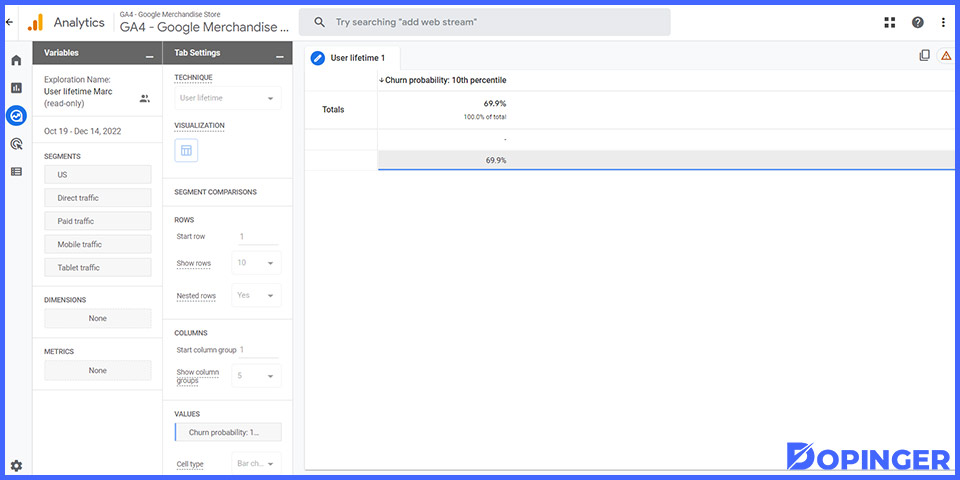
Learning Abilities
GA4 is also smart, as can be. It also outperforms UA when it comes to anything related to machine learning. In fact, this might be one of the most prominent characteristics within a Universal Analytics vs. Google Analytics 4 kind of comparison. For instance, insights are now more integrated into the rest of the platform. Not to mention the chance for users to address questions inside the search bar and thus conduct more in-depth searches.
Explorations
It’s impossible to hope to talk about data collection technology without the explorative aspect, right? Explorations in GA4 allow you to carry out clearer investigations regarding your marketing and SEO (Search Engine Optimization) efforts, to name only a few. You can now organize your reports more detailedly and assign them their dashboards.
Attribution
December 2019 was a sort of apotheosis for Google regarding tool development. That’s when it introduced its Attribution Project, the final fruit of many years of experimentation. Consequently, metrics related to attribution and conversion gained precision and accuracy.
GA4 seems determined to pursue that momentum. Users may judge it by checking out Advertising, the dedicated primary navigation. Dedicated to what exactly? Almost anything imaginable about conversion: paths, time tracking, touchpoints, and the Model Comparison Tool (MCT) for attribution.
Product Linking
If we named our article Google Analytics 4 vs. Universal Analytics, it was also because of a matter of outreach. You certainly know what Product Linking is about. It allows you to link relevant data between several Google products. The new thing with GA4 is that it expands this link-creation process by making it possible for a few more platforms. You may also link to Big Query, Google Merchant Center, and Google Optimize. It’s native, costs zilch, and sort of broadens your portfolio. Not bad, is it?
Statistical Improvement
We are talking about well-known statistical anomaly detection. Thanks to GA4, it is no more limited to insights only. As you probably know, it’s a feature directly connected to the aforementioned predictive analytics. So to create predictive models, you must own enough historical data. When you have them, you’re good to go for more comprehensive anomaly detection in GA4. Indeed, you may now investigate several line charts (in addition to insights).
Google Analytics 4 vs. Universal Analytics
Here comes the awaited moment of a GA4 vs. Universal Analytics comparison. This is a necessary step to understand what was going on until now and what will change from now on.
Privacy
Remember what we said earlier about the turmoil around privacy issues? Google Universal Analytics was indeed not a champ in that department. With GA4, Google promises the public a way more confidential environment, notably thanks to the following:
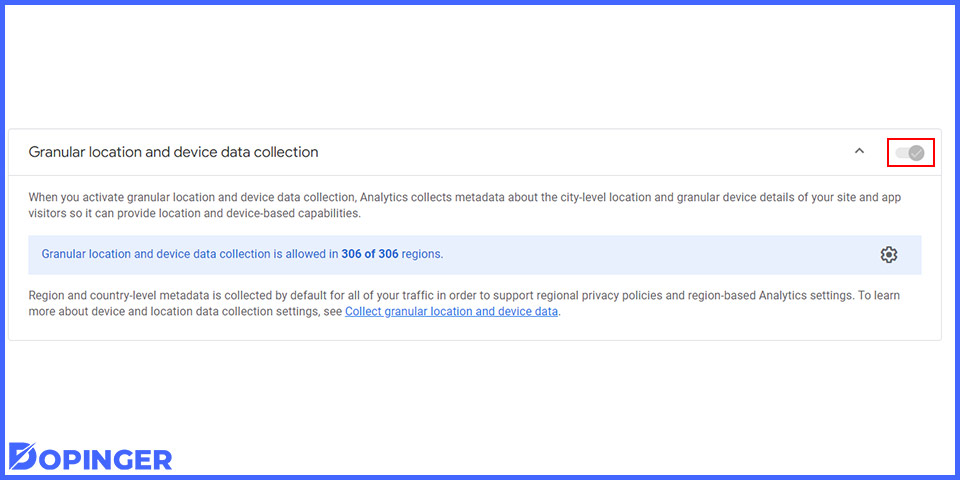
- IP addresses aren’t gathered and stored anymore, which is a huge change for a company accused of spying on its users.
- Data retention options are now more flexible. By default, you can keep user-specific data for 2 months, but this period is extensible for up to 14 months. Afterward, that kind of data will disappear permanently.
- Geolocational aspects have also been subject to changes. You are now free to turn off location-specific and country-specific ad personalization data.
- Data deletion is no longer a problem either. More precisely, if a user asks you to delete their data, you can do so more easily.
Marketing Flywheel
So many things have deeply changed inside our societies in less than a decade. Whereas mobile devices and apps were still somewhat marginal back in 2012, most people worldwide nowadays can’t picture their lives without them. Furthermore, the whole marketing mentality has also changed. The somewhat cartoonish funnel model was interested in gaining new customers without thinking about the longer term.
What about now? GA4 is a socioeconomic entity that prioritizes the customers as fully aware and technologically well-equipped business partners. The old saying, “the client is king” is more than simple flattery today. It’s about following your customers’ journey and, more importantly, retaining them. GA4 provides the all-in-one Data Streams (with the possibility to have several of them per GA property). This allows you to track your users’/customers’ interactions at a glance, regardless of the setting (website, app, etc.). As handy as it gets.
All in all, the outdated UA tracking approach is replaced with something way more efficient.
Reports
This is the sector where a Google Analytics 4 vs. Universal Analytics “competition” makes the most sense. GA4 has modified the language it uses and its perception of major metrics. For example, it prefers talking about “engagement” and “conversion”, unlike UA, which prefers respectively ‘behavior’ and “goals”. So now, you are invited to dissect the various facets of engagement instead of the bounce rate and average session duration. How? Well, meet Google’s new metrics: engaging sessions, engaged sessions per user, engagement rate, and average engagement time. That’s right; things got a little more ‘complicated’ than simply counting visits and exits.
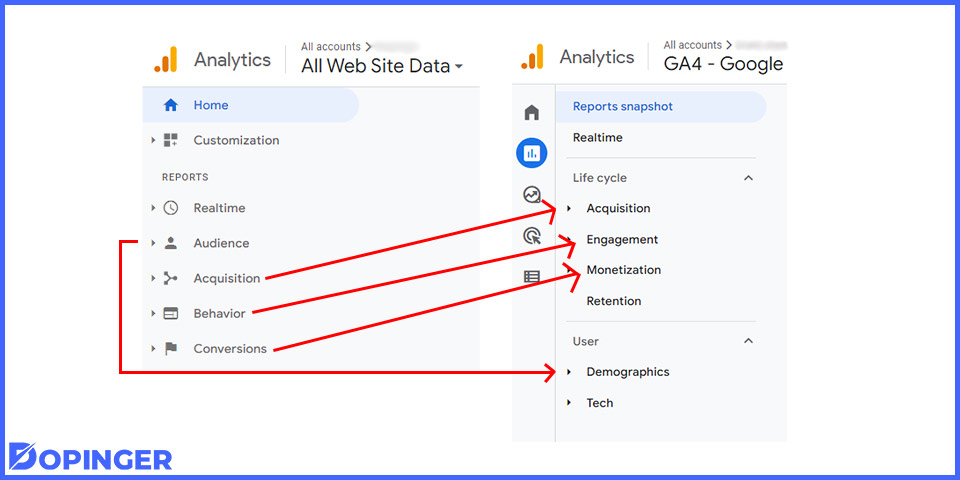
Moreover, GA4 pays more attention to details and analyzes several realities separately. Like what? Users and traffic. The first refers to people visiting your website independently from the device with which they are doing so. The latter is rather about sessions. In short, GA4 makes you investigate those two components via two different reports.
Let’s not forget either the brand-new event-based approach of GA4. Google’s new offspring sees everything on your site as an event. Unlike the Universal tracking approach that used to focus only on the session and the significant interactions in it, GA4 cares about even a simple first visit. So, we may claim that we now have a more comprehensive and inclusive platform.
Last but not least, those reports broaden how users treat information related to conversions. How? Through monetization. Now you can go beyond simple e-commerce tracking and keep track of almost any piece of income. Those generated by your apps and ads are the first examples. So here again, what you get is more inclusive reports that allow you to better plan your campaigns.
Concluding Thoughts
So what’s the outcome of our Google Analytics 4 vs. Universal Analytics ‘confrontation’? Well, it’s obvious that Google hasn’t taken the critics it was dealing with lightly. We might venture to say that there’s proof of goodwill here. In effect, Google Analytics 4 seems resolutely more protective and respectful toward the community of users regarding privacy issues. This in itself deserves special emphasis and even credits.
What about the rest? Our article shows that users will benefit from a more thorough data collection and analysis tool thanks to GA4. Should we object and claim that we may get lost in too many details? Not really. The current context is highly competitive; thus, seemingly minor elements sometimes make a difference. So yes, there’s no more room or excuse for approximative work in online undertakings.
In sum, time to grab a possible opportunity with improved privacy, better statistical analysis, and smarter predictions. That’s likely to suit the upcoming second quarter of our current century.
Frequently Asked Questions About
Basically, it is done through JavaScript measurement codes. You start by creating a Google Analytics account. Then you add a piece of the JS code to each web page. The system will take care of the rest. Whenever a user visits your website, you will get information about how they interacted with it and the pages included in it.
Up to 100 per account. Combinations of UA and GA4 properties do work as well.
Yes, GA4 gives you at least approximate geolocation information unless you choose to turn off that functionality.
Yes, but only until December 2023 (the official deadline). Afterward, you will still have six months to migrate your data, even though UA will stop processing them. However, we suggest you start and download your data from UA. Better be safe than sorry.
Well, that’s the final point of our Google Analytics 4 vs. Universal Analytics comparison. GA looks indeed undoubtedly better in terms of confidentiality and many other aspects. However, only time will tell whether that upgrade yields more significant results.





No comments to show.